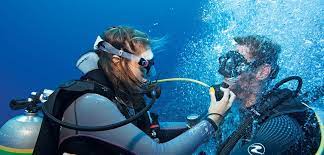
Hydrostatic testing process: 5 Steps for Scuba Tanks
The hydrostatic testing process for scuba tanks involves 5 key steps: 1) Visual inspection for cracks/dents (reject if depth exceeds 0.1 inch), 2) Filling with water to 90% capacity, 3) Pressurizin...

Handheld scuba tank safety: 5 pre-dive checks required
Before diving with a handheld scuba tank, perform these 5 critical checks: 1) Inspect the tank for dents/cracks (even small damage can risk failure); 2) Verify the pressure gauge reads 200-300 bar ...

Mini vs standard scuba tank: 6 crucial differences
Mini scuba tanks (e.g., 1-3L) offer 5-15 minutes of air vs. standard tanks (10-15L) providing 30-60 minutes, with mini tanks weighing 2-5 lbs (portable) vs. standard 25-35 lbs. Mini tanks suit shal...

Steel vs aluminum scuba tanks: 5 maintenance differences
Steel vs aluminum scuba tanks differ in maintenance: steel tanks (3-5 times more durable) require annual hydrostatic testing, while aluminum needs it every 5 years; steel is prone to rust (30% fast...

Temperature Impact on Mini Tanks: Storage Limits in 6 Zones
The study on Temperature Impact on Mini Tanks: Storage Limits in 6 Zonesreveals that storage capacity drops by 12-18% in high-temperature zones (above 30°C), while stable conditions (20-25°C) maint...

Scuba tank sizes chart: 5 capacities for different dive needs
Here’s a concise scuba tank sizes chart for 5 common dive needs: Standard aluminum 80 cu.ft (11.1L) suits recreational dives to 60ft, while compact 50 cu.ft (7L) tanks are ideal for snorkelers tran...